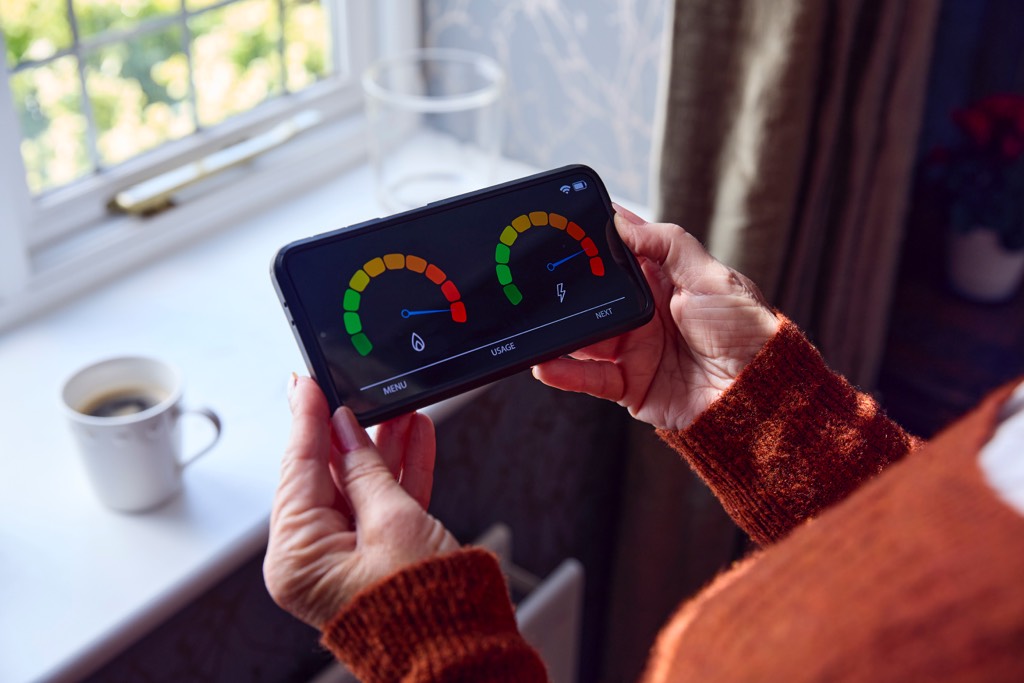At what temperature does a heat pump stop working?
A typical air source heat pump stops working effectively at around minus 10°C. But some modern heat pumps can work in temperatures as low as minus 25°C. Ground source heat pumps work well the cold. The ground temperature normally remains stable even as the air temperature drops.
To examine this in a bit more detail, let’s first look at how heat pumps work.
How does a heat pump work?
Heat pumps use a refrigerant gas to extract heat from the outside your home and distribute it inside. There are two types of heat pump, air-source heat pumps and ground-source heat pumps.
With an air source heat pump, the refrigerant gas is circulated in pipes outside your home. The refrigerant starts off as a liquid at very low temperatures, but quickly boils into a gas when enough heat is absorbed. This gas is compressed to heat it further before it is circulated inside your home. The heat is distributed, the gas cools and it is pumped outside for the process to start again.
A ground source heat pump works in a similar way, but instead of using the heat from the outside air, it takes heat from the ground. The refrigerant is circulated through pipes in the earth, typically in your garden.
Air to air vs air to water heat pumps
Heat pumps come in two flavours, air to air and air to water. An air-to-air heat pumps is a bit like an air conditioner in reverse. But instead of blowing cool air into your home it blows hot air. Some air to air systems are reversible, meaning that they can cool your house in the warmer months and heat it in the winter. We call this an HVAC system – which stands for heating, ventilation and air conditioning.
An air to air system will not heat your hot water. In order to do this you will need a separate system like a gas boiler (gas furnace) or an electric boiler (electric strip).
Air to water systems are more common in the UK. Instead of blowing hot air directly into your home, this type of heat pump will heat water in a cylinder. This water is then used to drive radiators and/or underfloor heating as well as for domestic purposes. The advantage of this type of heat pump is that you do not need a separate solution for your hot water. You may need to make some upgrades to your radiator system to maximise the efficiency of the heat pump however. We have covered this elsewhere on the site.
What happens in cold temperatures?
An air source heat pump will continue to work every when the temperature outside is below zero Celsius. This is because the gas used to extract heat from the outside air boils at around minus 50°C. So even though there might be cold air outside, there is still a temperate differential between the refrigerant and the outside air. Heat will flow from one to the other.
That said, a typical air source heat pump will become less efficient in extreme cold. Most heat pumps do tend to become less efficient in very cold weather (temperatures below minus 10°C).
Some cold-climate heat pumps are specially designed to work in extremely cold weather (down to minus 25°C). Although these air source heat pumps are a good solution if you live in colder part of the country, there are one or two disadvantages with them.
Firstly cold climate heat pumps do tend to cost more than standard heat pumps. Secondly, some of they will use an auxiliary heater to maintain heat when it gets really cold. From an energy use point of view, this may not be the most efficient heating option for the colder months.
Ground source heat pumps are less affected by very cold temperatures. This is because the ground typically retains more heat than the air above it.
Maintaining your heat pump efficiency
Homeowners want to know what temperature does a heat pump stop working at. But they also want to know how to maintain their heat pump’s efficiency during colder temperatures.
Between 10°C and 20°C is the point at which most heat pumps operate effectively. They are up to three times more efficient than conventional gas boilers at this temperature. The heat pump produces three times a much heat energy as it take in. To put this in perspective, only around 90% of the energy used by a gas boiler (also known as a gas furnace) will be converted into heat.
At lower temperatures this changes. The energy usage of a heat pump will rise when the ambient temperature decreases and its efficiency will gradually decline. The heat pump may perform even worse than conventional heating systems at lower temperatures.
At the time of writing (Nov 23) the price per KWH of electricity is over three times that of gas. Thus, when a heat pump and a gas boiler match each other in energy used, the heat pump will come out with higher heating bills.
This many not always be the case however as electricity prices are widely expect to decrease in the coming months and years. This will reduce heating costs for heat pump owners.
Keeping your house in the optimal temperature range
As we mentioned above, the most popular heat pump models in the UK are air to water heat pumps. These heat pump systems can (theoretically at least) be slotted neatly into an existing radiator and hot water cylinder arrangement. This makes them an excellent choice for homeowners looking to replace a traditional natural gas boiler.
There can be a problem however. Typically, air to water systems are designed to run at around 45°C inside your home. This is a lot lower than a conventional gas furnace which is designed to run at around 65°C.
To maintain a comfortable year-round temperature, many installers will recommend a radiator upgrade when you install an air to water system. A standard air to water heat pump will require a larger convection area in the radiators to get the same level of heating. This can be solved by changing your radiators to high output models, or by installing underfloor heating.
You may choose not to upgrade your radiators, which may be fine during the spring and autumn. But you may struggle to get your home hot enough during the winter months. Some new heat pumps are able to supply water at a much higher temperate – comparable to a gas boiler. But these models do tend to be quite expensive.
If you live in an older building, you may also need to make upgrade to insulation, windows and doors. This can be quite involved, both financially and timewise. We have covered it elsewhere on the site.
What temperature does a heat pump stop working at? In summary
The fact is that UK does not have very cold winters. A typical air source heat pump will work well to minus 10°C, with some models going to minus 25°C. Although they may not be the most efficient want to warm your home at this temperature, you should not worry that they will stop working.
It’s worth noting that in Norway, which has much colder winters than the UK, around half of householders use air source heat pumps to heat their homes. The Norwegian government estimate that this has saved the country around 10 TWh – enough to make 368 trips to the moon. To our mind, this is proof enough that air source heat pumps can perform well during cold days in cold climates.
To find out more about the price of an air source heat pump, please check our article ‘how much does an air source heat pump cost’. In the UK there are a number of funding schemes available to help with the cost of installation. You can find more information on them here.

